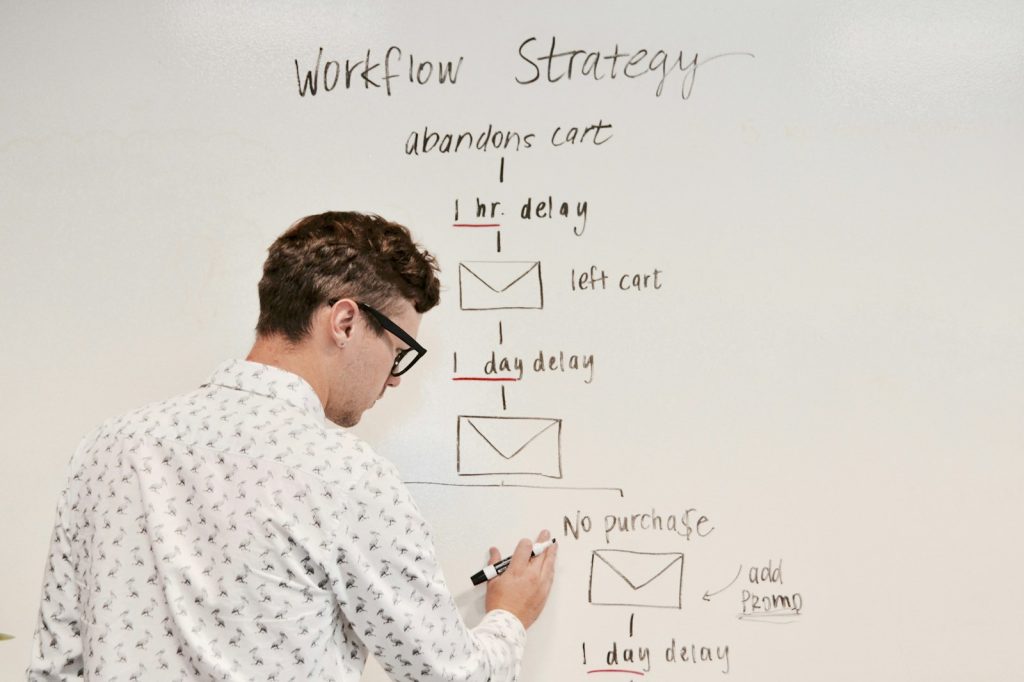In today’s digital landscape, email marketing remains a powerful tool for small businesses. This comprehensive guide explores how to effectively build and nurture your email list, transforming subscribers into loyal customers. We’ll cover everything from crafting compelling opt-in forms and delivering engaging content to leveraging automation and analyzing your results. By following these strategies, your small business can unlock the immense potential of email marketing to drive sales, boost brand awareness, and foster lasting customer relationships. This isn’t just about sending emails; it’s about building meaningful connections.
Introduction
Email marketing offers small businesses a direct line of communication with their target audience, allowing for personalized messaging and targeted campaigns that are difficult to replicate through other channels. Unlike fleeting social media posts, emails land directly in your subscribers’ inboxes, providing a consistent touchpoint for nurturing leads and building brand loyalty. This guide will equip you with the knowledge and strategies to harness the power of email marketing and watch your business thrive. Let’s dive in!
Frequently Asked Questions
Q1: How do I legally collect email addresses?
A1: You must always obtain explicit consent. This means clearly stating your email marketing practices in your privacy policy and providing an easy-to-find opt-in checkbox or form. Avoid pre-checked boxes and ensure transparency about how you’ll use the email addresses.
Q2: What kind of content should I send in my emails?
A2: Focus on providing value! Share helpful tips, exclusive content, promotions, company updates, and stories that resonate with your audience. Variety is key; mix up different content formats to keep your subscribers engaged. Avoid sending solely promotional emails – aim for a balance.
Q3: How often should I send emails?
A3: There’s no magic number. The ideal frequency depends on your industry, audience, and the type of content you’re sharing. Start with a less frequent schedule (e.g., a weekly newsletter) and adjust based on subscriber engagement (open rates, click-through rates). Too many emails can lead to unsubscribes.
Building Your Email List
Building a substantial and engaged email list is crucial for the success of your email marketing strategy. A strong list consists of subscribers who are genuinely interested in your products or services and actively engage with your emails. Here’s how to achieve this:
- Compelling Opt-in Forms: Don’t just ask for emails; offer something in return! Incentivize sign-ups with lead magnets like free ebooks, checklists, discounts, or exclusive content. Make the form visually appealing and easy to complete.
- Strategic Website Placement: Place your opt-in forms strategically on your website – consider pop-ups (used sparingly!), embedded forms on landing pages, and forms in your website footer. A/B test different placements to find what works best.
- Social Media Promotion: Promote your email list on social media platforms. Offer exclusive content or early access to sales for subscribers only to incentivize sign-ups.
- Content Upgrades: Offer enhanced versions of existing blog content as lead magnets. For example, a blog post could be upgraded into a downloadable PDF checklist or workbook.
- Contests and Giveaways: Host contests and giveaways to increase brand awareness and attract new subscribers. Make participation simple by requiring an email address as an entry method.
- Referral Programs: Encourage existing subscribers to refer friends and family by offering incentives to both the referrer and the referee.
Crafting Engaging Email Content
Your email content is the heart of your email marketing strategy. Engaging, valuable content keeps subscribers coming back for more. Let’s explore how to create email content that resonates.
- Segmentation: Divide your email list into segments based on demographics, interests, purchase history, or other relevant criteria. This allows you to send highly targeted, personalized messages.
- Personalized Subject Lines: Craft compelling subject lines that are personalized to each segment. Use the recipient’s name and reference their interests.
- High-Quality Visuals: Use eye-catching images and videos to break up text and enhance the visual appeal of your emails. Make sure they are optimized for email clients.
- Mobile Optimization: Ensure your emails are mobile-friendly, as many people open emails on their smartphones. Test your emails across various devices.
- Clear Call to Action: Always include a clear and compelling call to action (CTA) in your emails. This tells subscribers what you want them to do (e.g., shop now, learn more, download a resource).
- A/B Testing: Continuously test different elements of your emails, such as subject lines, visuals, and CTAs, to optimize for higher engagement rates.
Email Marketing Automation
Automation is key to saving time and maximizing the effectiveness of your email marketing efforts. This involves using email marketing software to automate tasks like sending welcome emails, follow-up sequences, and triggered emails based on specific actions.
- Welcome Emails: Send a welcome email series to new subscribers introducing your brand and providing value. This fosters a sense of community and builds anticipation.
- Automated Follow-up Sequences: Create automated email sequences that nurture leads over time. These sequences can provide valuable content, answer common questions, and gently encourage purchases.
- Triggered Emails: Set up triggered emails that are sent automatically based on specific subscriber actions, such as abandoning a cart, making a purchase, or downloading a resource.
- Workflows: Design workflows that manage the journey of a subscriber based on their behaviour and engagement with your emails.
- Segmentation and Personalization: Automate the process of segmenting your audience and personalizing emails to achieve maximum impact.
- Integration with Other Tools: Integrate your email marketing platform with other marketing tools for a seamless experience.
Analyzing Your Results and Making Improvements
Tracking key metrics and analyzing your results is crucial for refining your email marketing strategy. This involves monitoring metrics such as open rates, click-through rates, conversion rates, and unsubscribe rates.
- Open Rates: Monitor open rates to gauge the effectiveness of your subject lines and overall email design. Low open rates may indicate a need for subject line improvement.
- Click-Through Rates: Track click-through rates to measure the effectiveness of your calls to action and overall email content. Low click-through rates might suggest the email content isn’t compelling enough.
- Conversion Rates: Analyze conversion rates to measure how effectively your emails drive desired actions, such as purchases or sign-ups.
- Unsubscribe Rates: High unsubscribe rates indicate issues with email frequency, content relevance, or overall email strategy. Use the data to refine your approach.
- A/B Testing: Use A/B testing to experiment with different elements of your emails and determine what resonates best with your audience.
- Email Marketing Platform Analytics: Leverage the inbuilt analytics of your email platform to get insights into your email campaign performance.
Leveraging Email for Customer Retention
Beyond acquisition, email marketing is a powerful tool for maintaining customer relationships and driving repeat business. Here’s how you can use email to retain existing customers:
- Loyalty Programs: Use email to communicate details of loyalty programs, exclusive offers, and rewards to encourage customer retention.
- Personalized Recommendations: Use data to send personalized product recommendations and offer tailored discounts to existing customers.
- Customer Surveys: Regularly send customer surveys to gather feedback and demonstrate that you value their input. Act on the feedback received.
- Birthday Emails: Send personalized birthday emails with exclusive discounts or offers to build stronger relationships with customers.
- Post-Purchase Follow-up: Send a follow-up email after a purchase to check in, provide support, and promote related products.
Email marketing is not a “set it and forget it” strategy. It requires ongoing effort, creativity, and a data-driven approach to continuously refine and optimize your campaigns. By consistently building your list, crafting engaging content, automating tasks, and analyzing your results, you can harness the power of email marketing to achieve significant growth for your small business. Remember, it’s not just about sending emails; it’s about building relationships, nurturing leads, and ultimately, turning subscribers into loyal customers. Start implementing these strategies today, and watch your business flourish.

